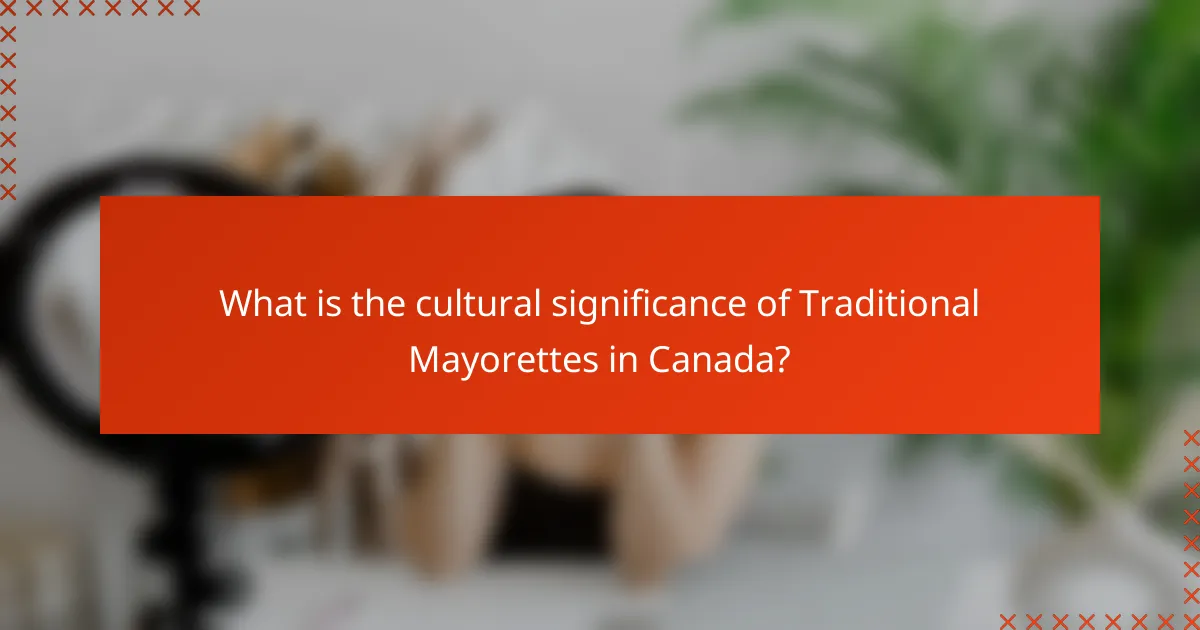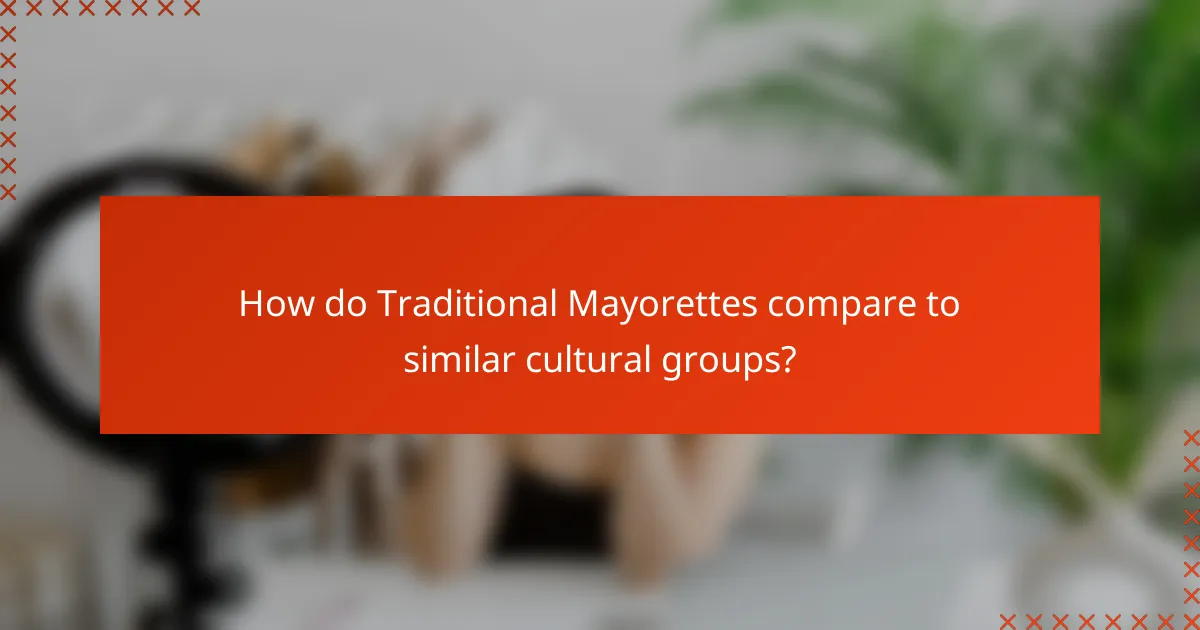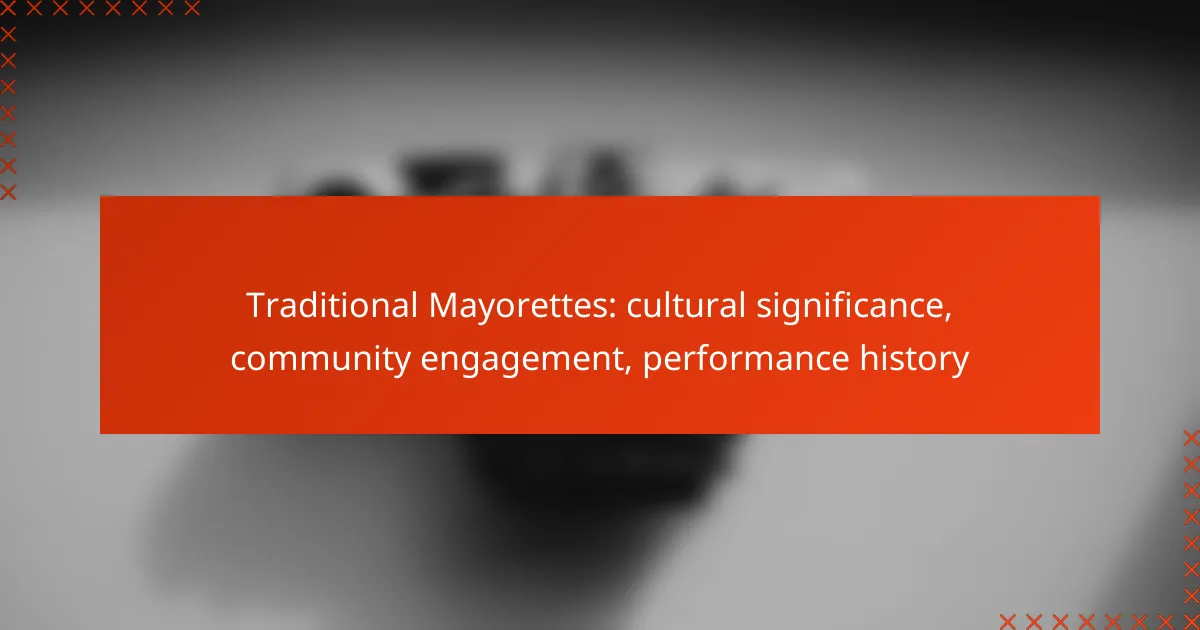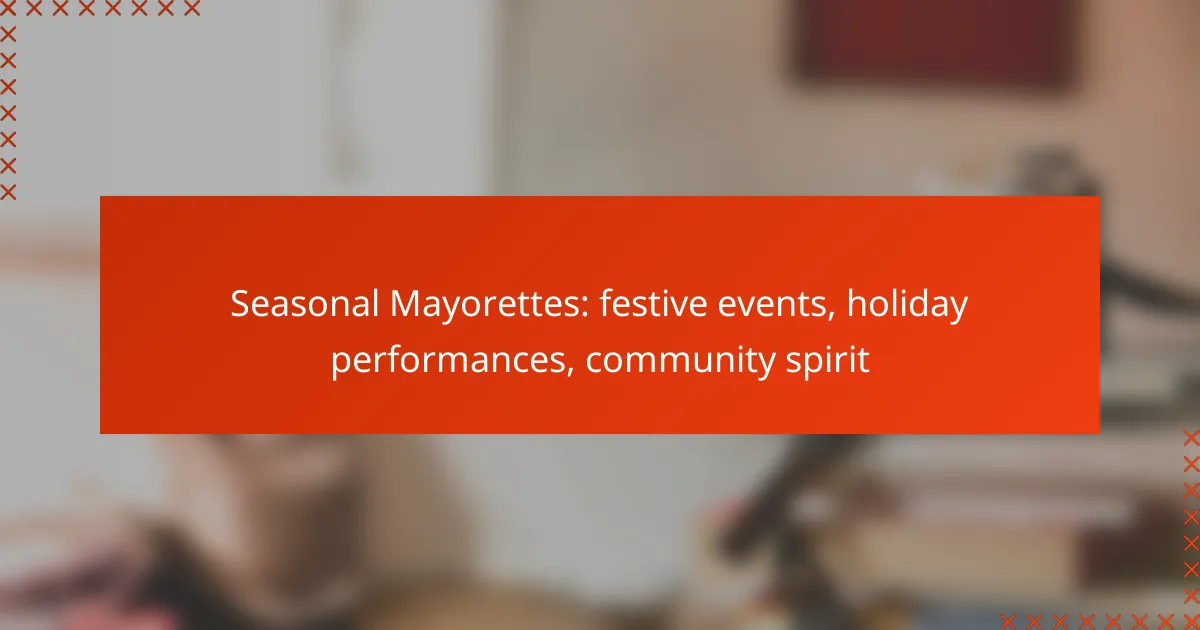Traditional Mayorettes play a crucial role in Canadian culture by engaging communities through vibrant performances and participation in local events. They celebrate historical heritage while fostering connections among youth, creating a sense of pride and belonging in local traditions. Their performances, which blend traditional and contemporary elements, reflect the dynamic nature of community identity and artistic expression.

How do Traditional Mayorettes engage communities in Canada?
Traditional Mayorettes engage communities in Canada by participating in local events, promoting cultural heritage, and fostering connections among youth. Their vibrant performances and community involvement create a sense of belonging and pride in local traditions.
Community events participation
Traditional Mayorettes actively participate in various community events such as parades, festivals, and cultural celebrations. Their presence adds a festive atmosphere and attracts attendees, enhancing the overall experience of these gatherings.
By performing at events, Mayorettes not only entertain but also educate the public about their cultural significance. This engagement helps to strengthen community ties and encourages local residents to take part in cultural activities.
Promoting local culture
Mayorettes play a crucial role in promoting local culture through their performances, which often showcase traditional music, dance, and attire. This visibility helps preserve cultural practices and introduces them to younger generations.
Additionally, Mayorettes often collaborate with local artists and cultural organizations to host workshops and demonstrations. These initiatives provide opportunities for community members to learn about their heritage and participate in cultural expressions.
Building youth connections
Traditional Mayorettes serve as role models for youth, inspiring them to engage with their cultural roots. By involving young people in their performances, they foster a sense of pride and belonging among the younger generation.
Programs that include mentorship and training for aspiring Mayorettes help build skills and confidence in youth. This connection not only strengthens cultural ties but also encourages lifelong participation in community activities.

What is the cultural significance of Traditional Mayorettes in Canada?
Traditional Mayorettes hold a vital cultural significance in Canada, representing a blend of historical heritage and community engagement. These performers not only celebrate local traditions but also foster a sense of pride and identity among community members.
Representation of heritage
Traditional Mayorettes embody the rich cultural heritage of various Canadian communities, often reflecting the historical influences of Indigenous, French, and British traditions. Their performances typically include traditional costumes and music, which serve as a visual and auditory representation of the diverse backgrounds that shape Canadian identity.
Through their routines, Mayorettes preserve and promote local folklore, ensuring that stories and customs are passed down through generations. This representation helps maintain a connection to the past while allowing communities to celebrate their unique histories.
Symbol of community pride
Mayorettes are a powerful symbol of community pride, often participating in parades and festivals that showcase local culture. Their vibrant performances foster a sense of belonging and unity among residents, encouraging participation from all age groups.
Communities often rally around their Mayorettes, supporting them through fundraising and events. This collective effort strengthens community ties and reinforces the importance of local traditions in everyday life.
Influence on local traditions
The presence of Traditional Mayorettes has a significant influence on local traditions, often inspiring new events and activities that celebrate cultural heritage. Their performances can lead to the revival of traditional crafts, music, and dance, enriching the local cultural landscape.
Moreover, Mayorettes often collaborate with local schools and organizations to educate younger generations about their cultural significance. This engagement not only preserves traditions but also encourages a sense of responsibility among youth to continue these practices in the future.

What is the performance history of Traditional Mayorettes?
The performance history of Traditional Mayorettes is rooted in cultural celebrations, particularly in Canada, where they have become a vibrant symbol of community engagement and artistic expression. Over the years, their performances have evolved, showcasing a blend of traditional and contemporary elements that reflect local heritage.
Origins in Canadian festivals
Traditional Mayorettes originated in Canadian festivals, particularly during the 19th century, where they were featured in parades and community events. These performances often involved young women dressed in colorful costumes, representing local pride and cultural identity.
Their presence in festivals was not only for entertainment but also served to strengthen community ties, as they participated in celebrations that highlighted local customs and traditions.
Evolution of performances
Over the decades, the performances of Traditional Mayorettes have evolved significantly. Initially focused on simple marching routines, they now incorporate intricate choreography, music, and theatrical elements, making them more dynamic and engaging for audiences.
Modern performances often blend traditional dance styles with contemporary influences, allowing for greater creativity and expression. This evolution has helped maintain interest and relevance in a changing cultural landscape.
Notable performances and events
Traditional Mayorettes have been featured in numerous notable performances and events across Canada, including national celebrations and local festivals. Events like Canada Day parades and regional fairs often showcase their vibrant routines, drawing large crowds and fostering community spirit.
Additionally, competitions and showcases have emerged, allowing Mayorettes to demonstrate their skills and artistry, further enhancing their cultural significance within Canadian society.

What are the key attributes of Traditional Mayorettes?
Traditional Mayorettes are characterized by their vibrant costumes, intricate choreography, and lively musical accompaniment. These attributes not only showcase cultural heritage but also foster community engagement through performances at local events and festivals.
Costume design and symbolism
The costumes worn by Traditional Mayorettes are often elaborate and colorful, reflecting the cultural identity of the region. Common elements include bright fabrics, intricate embroidery, and accessories like hats and sashes that symbolize local traditions and values.
Each costume is designed to enhance the visual impact of performances, often incorporating motifs that represent historical or cultural narratives. For example, certain colors may signify specific meanings, such as joy or celebration, while patterns can depict local flora or fauna.
Choreography styles
Choreography for Traditional Mayorettes typically blends various dance styles, including folk, contemporary, and sometimes even classical elements. The routines are designed to be visually captivating, often featuring synchronized movements that tell a story or convey a theme relevant to the community.
Performers usually undergo extensive training to master these styles, ensuring that their movements are both precise and expressive. This training not only enhances their performance skills but also deepens their connection to the cultural significance of their roles.
Musical influences
The music accompanying Traditional Mayorettes is a vital component of their performances, often drawing from local folk traditions, contemporary genres, and even classical influences. Instruments commonly used include drums, flutes, and string instruments, creating a rich auditory backdrop that complements the choreography.
Musical selections are typically upbeat and engaging, encouraging audience participation and enhancing the festive atmosphere of events. The rhythm and melody play a crucial role in setting the tone for performances, making the music an integral part of the overall experience.

How do Traditional Mayorettes compare to similar cultural groups?
Traditional Mayorettes stand out from similar cultural groups through their unique blend of marching, dance, and performance elements, often emphasizing local heritage and community engagement. While they share characteristics with other performance groups, their specific cultural significance and historical roots set them apart.
Differences from drumlines
Traditional Mayorettes differ from drumlines primarily in their focus on choreography and visual performance rather than solely on musical rhythm. While drumlines emphasize percussion and often perform in competitive settings, Mayorettes integrate dance routines and colorful costumes, creating a vibrant spectacle that highlights cultural themes. Additionally, Mayorettes often participate in parades and community events, fostering local pride.
Similarities with dance troupes
Traditional Mayorettes share several similarities with dance troupes, particularly in their emphasis on coordinated movements and artistic expression. Both groups often perform choreographed routines that require teamwork and practice. However, Mayorettes typically incorporate elements of marching and military-style formations, which distinguishes them from more contemporary dance styles that may focus solely on artistic interpretation.
Influence of majorette culture
Majorette culture has significantly influenced Traditional Mayorettes, particularly in terms of performance style and community involvement. The incorporation of rhythmic movements and elaborate routines has helped shape the identity of Mayorettes, making them a staple in local festivities. This cultural exchange has also led to the evolution of new styles and practices within the Mayorette community, enhancing their relevance in modern celebrations while preserving traditional elements.

What are the future trends for Traditional Mayorettes?
The future of Traditional Mayorettes is likely to involve a blend of cultural preservation and modern adaptation. As communities evolve, these performances may incorporate contemporary themes while maintaining their historical roots.
Cultural Preservation
Efforts to preserve the cultural significance of Traditional Mayorettes are crucial. Communities may focus on educational programs that teach younger generations about the history and values behind these performances. Workshops and cultural festivals can serve as platforms for showcasing traditional attire and dance, ensuring that the heritage is passed down.
Community Engagement
Increasing community involvement is essential for the future of Traditional Mayorettes. Local organizations might collaborate with schools and cultural institutions to create events that encourage participation. Engaging the community through social media campaigns can also raise awareness and attract new members.
Performance Innovation
Innovations in performance styles are expected as Traditional Mayorettes adapt to modern audiences. This may include the integration of contemporary music and dance elements while retaining traditional costumes and choreography. Experimenting with multimedia presentations during performances can also enhance audience engagement.



